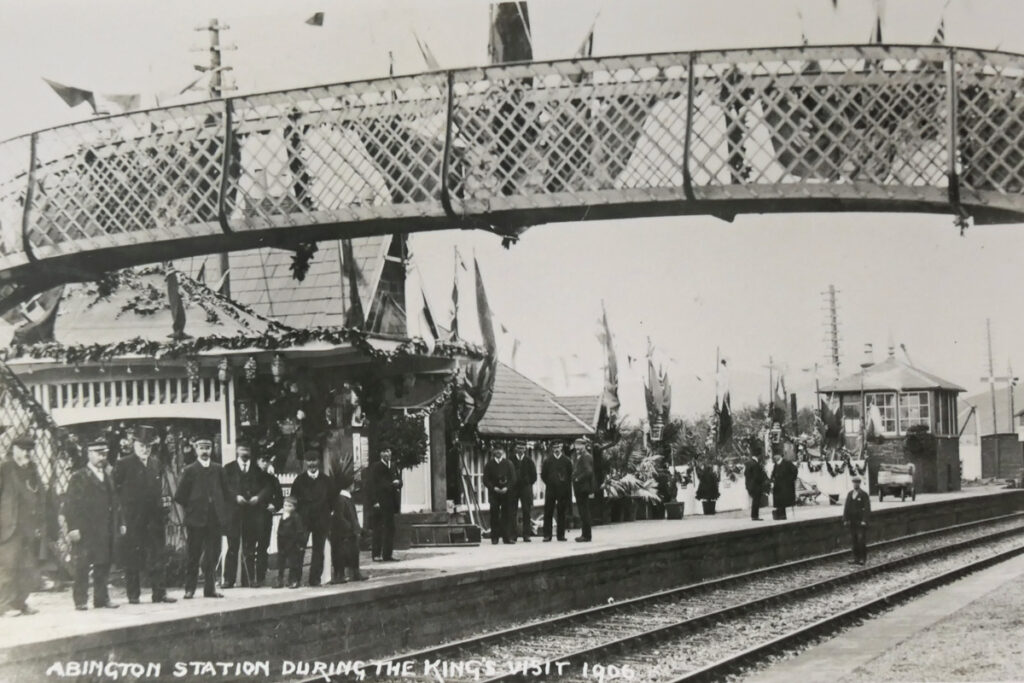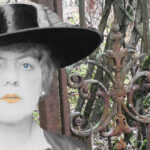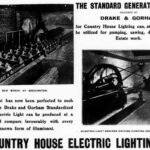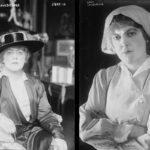One grey afternoon in October 1906, a special train came to a halt at the little wayside station of Abington. One man alighted from the train, having bid a respectful farewell to those who remained aboard. As the train pulled away, the man left on the platform might have reflected that all of the hills and lands around him, as far as the eye could see, were his personal property. The man left on the train steaming slowly towards London may have shared a similar satisfaction when contemplating his role as ruler of an empire that extended around the globe.
Lord Colebrooke was then a Lord-in-waiting to Edward VII and had accompanied the King during his recent stay at Balmoral. The King had chosen to return to London in order to attend the Newmarket races, but would travel back up to Scotland the following week for a personal holiday on Lord and Lady Colebrooke’s Abington estate.
Both of the Colebrookes had close links with the Royal household, indeed the King and Queen were Lady Colebrooke’s godparents. The King had visited Abington when he was Prince of Wales, but since that time, the Colebrooke’s had built an extraordinary new cottage-style country house hidden in the woods of the Glengonnar glen.
The Royal train’s brief pause at Abington allowed Lord Colebrooke to alight and inspect preparations for the visit, including the many garlands and celebratory arches that already graced the village. It also gave authorities the opportunity to rehearse the security arrangements that would be needed during the visit. A correspondent for the Hamilton Advertiser helpfully commented on the “wise forethought and precautions against anarchists and train-wreckers which even a peaceful hamlet such as Abington might harbour in its bosom”. He also observed that the station overbridge was “a point of vantage for any bomb-thrower who had ambitions to make history.” It was subsequently reported that “a considerable number of county constabulary and detectives from London have taken up their quarters in the village for the week.”
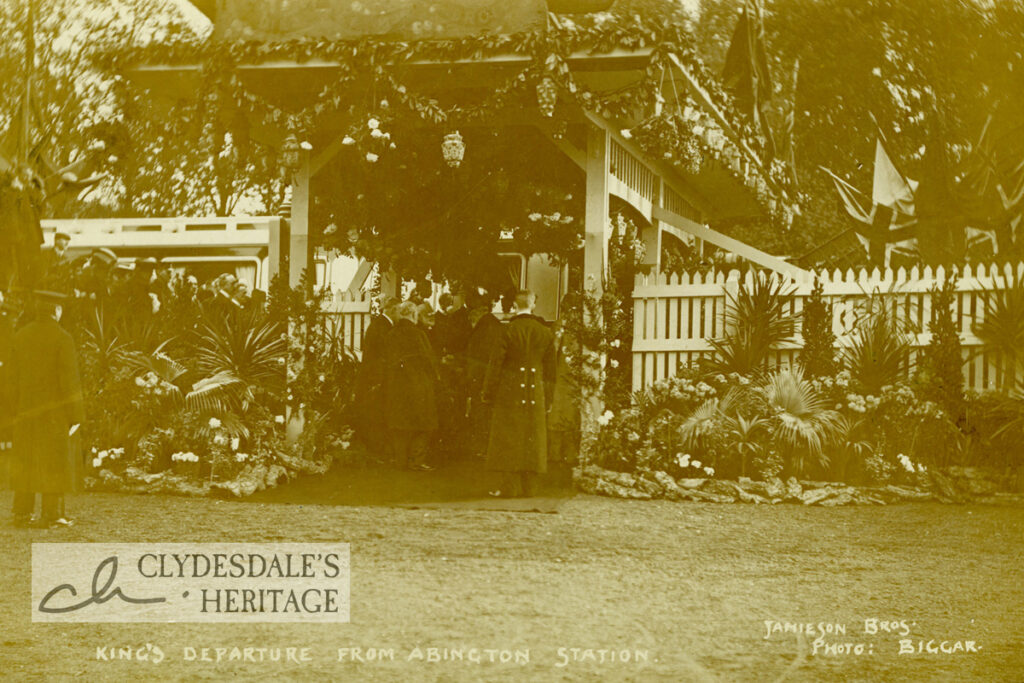
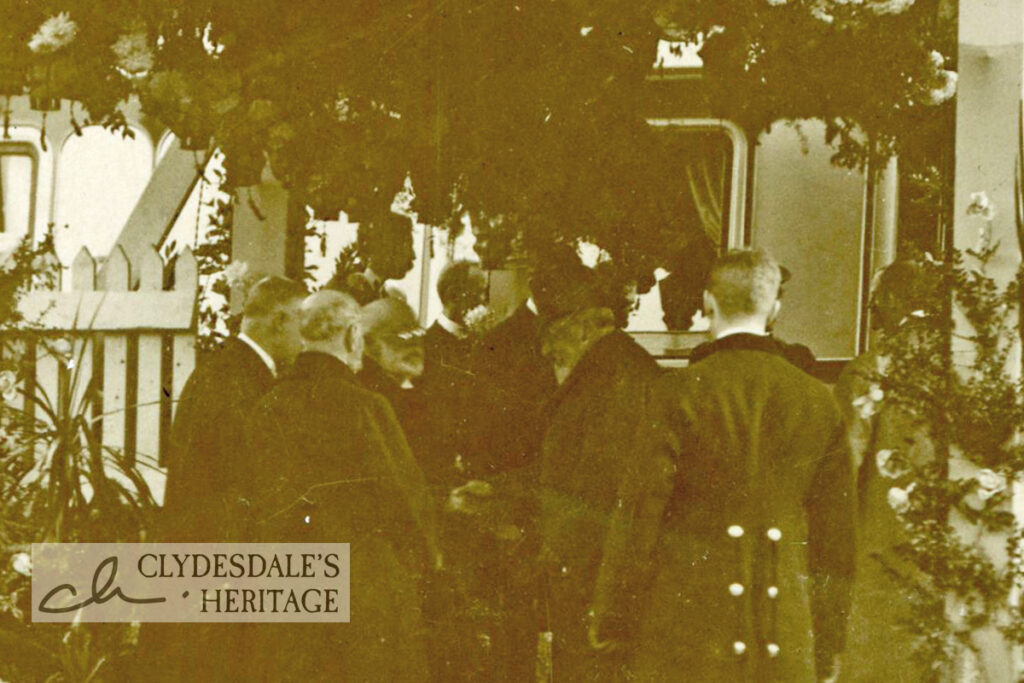
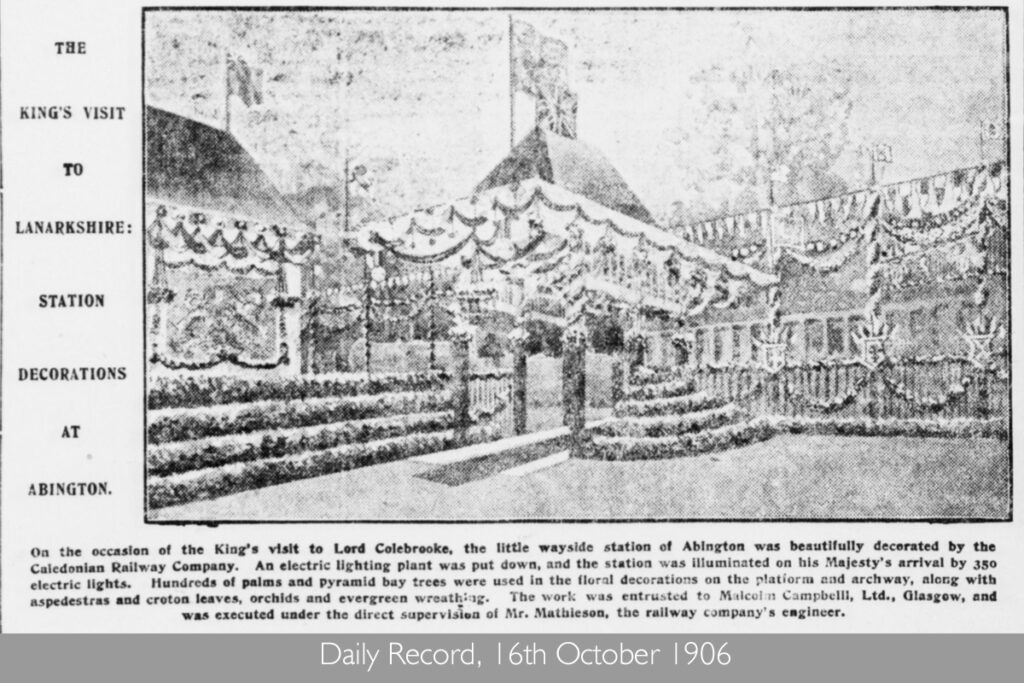
Postcard of the King’s departure from Abington, and an illustration of the station decorations.
On the morning of Monday 18th October 1906, the King ate a hearty breakfast then donned his Field Marshal’s uniform to conduct a short ceremony at 10.30 in one of the small state rooms of Buckingham Palace. Five minutes later, once Earl Carrington had been inducted into the Order of the Garter, the King performed a quick change and, wearing a grey overcoat and a bowler hat, was whisked by car across London to Euston station, where the 11.30 Scotch express was waiting to depart.
On this occasion, three off the London and North Western Railway’s Royal carriages were attached to a public service rather than forming a separate Royal train. Elaborate arrangements were necessary at Euston, and intermittent stations, to cordon off areas of platform to maintain a safe distance between the Royal household and their loyal subjects. As a further security measure, a pilot engine ran twenty minutes ahead of the Scotch express, alert to any problems or perils. As was customary. The King was introduced to the Chair and senior officials of the London and North Western Railway at Euston, and when the train reached Caley metals at Carlisle, the Chair and senior officials of the Caledonian Railway were also introduced and welcomed aboard.
It was dark, and the weather miserable, by the time the express reached Abington. The station, which was usually lit by a few gloomy oil lanterns, shimmered in the glow of 350 electric lamps that illuminated arches and trellises resplendent in greenery, flags, Chinese lanterns and flying garlands. Four cars, including the King’s own vehicle brought down from Balmoral, awaited the Royal party and their hosts. Cheered on by well-wishers, the party set off along the tree-line public road from the station, across the Clyde, and onward towards Abington village, before turning into the private grounds of the Abington estate.
Among the elegant avenue of lime and sycamore trees, estate workers were stationed every twenty yards along the route equipped with flaming torches. As soon as the cars had passed, each torch-bearer joined the end of the procession to become part of a growing river of flame. Crossing the Carlisle road on a recently-constructed bridge, the parade then descended into the wooded glen of Glengonnar burn, and on turning a corner would suddenly be confronted with the remarkable Glengonnar House. pin-pointed by electric lights, Described as a “picturesque rambling cottage” it nevertheless boasted 27 bedrooms, including a wing that had been built especially for the King’s visit.
When all had reached their destination, the flaming torches were thrown into heaps, and bonfires lit on hilltops either side of the valley.
Glengonnar House, sometimes referred to as Glengonnar Lodge, lay at the heart a 30,000 acre shooting estate, Most of the King’s “restful holiday” was to be spent on the grouse moors, and over the course of his stay Edward and his shooting party bagged 398 brace of grouse, 70 black game, 31 hares and one most unfortunate snipe.
Tuesday was spent on the moors of Netherton, on the Earl of Home’s estate, and a fine luncheon was served at Netherton house. On Wednesday the shooting party spent much of the day on Elvanfoot moor, and on the lands of Midlock, both within the Colebrooke’s estate. They lunched at Midlock farm and viewed the ruins of Crawford Castle in the passing.
On Thursday, after a quiet morning, the King and entourage set off to Dalmeny to visit the Earl of Rosebery. Driving slowly through Abington, and acknowledging the school kids who had given time off their studies to wave and cheer, the four cars continued by way of Lamington, Biggar and West Linton. Friday was bitter, with cold driving snow. The planned shoot on the Earl of Home’s estate had to be abandoned; however the Royal party sped through the foul weather for a brief visit to the Earl and assorted Scottish nobles at Douglas Castle.
The Royal holiday to lovely South Lanarkshire came to an end all too soon, and on Saturday morning the King, his guests, and his hosts, retraced their route to the railway station, but this time in the daylight. Villagers lined the roads, and local schoolchildren were marshalled on the exuberantly-decorated station platform to bid a fond farewell. The tweed-clad King was again introduced to the Chairman of the Caledonian Railway and no less than ten railway officials before boarding the Royal saloons, which were then coupled to the rear of the 10.50 express from Edinburgh to Euston.
The King’s visit briefly placed the village of Abington in the public spotlight, and national newspapers described the picturesque delights of the area in glowing terms – “A beautiful Clydesdale village, situated on the uplands sloping towards the Lowther Hills” One commentator described Abington as “fast rising into popularity as a health resort”, and expressed the hope that “after the king’s visit it is certain to be more popular than ever”.
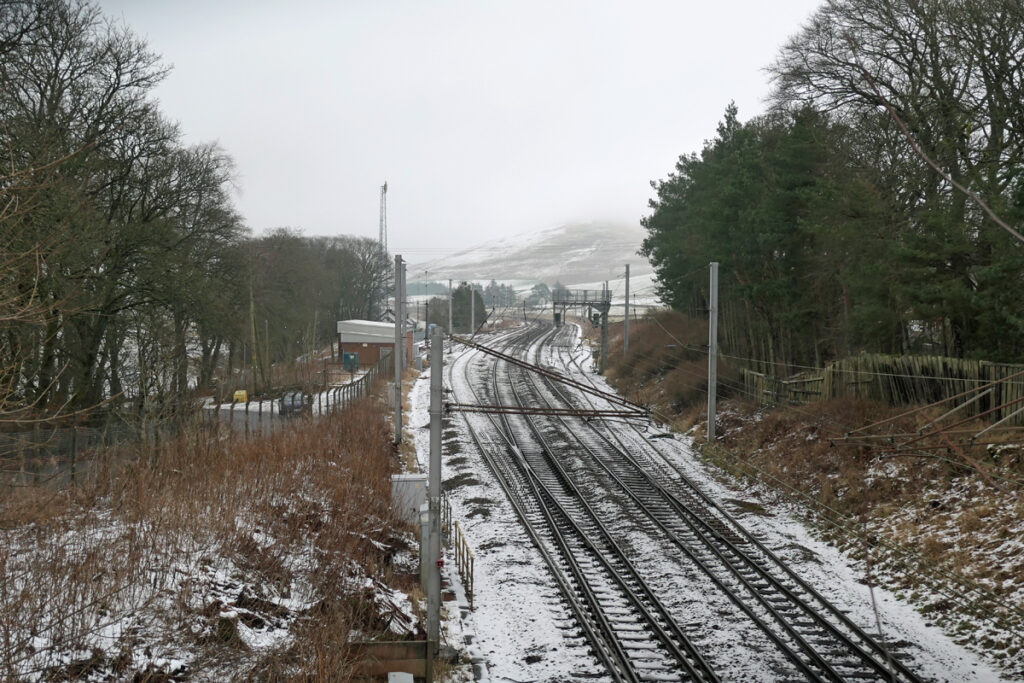
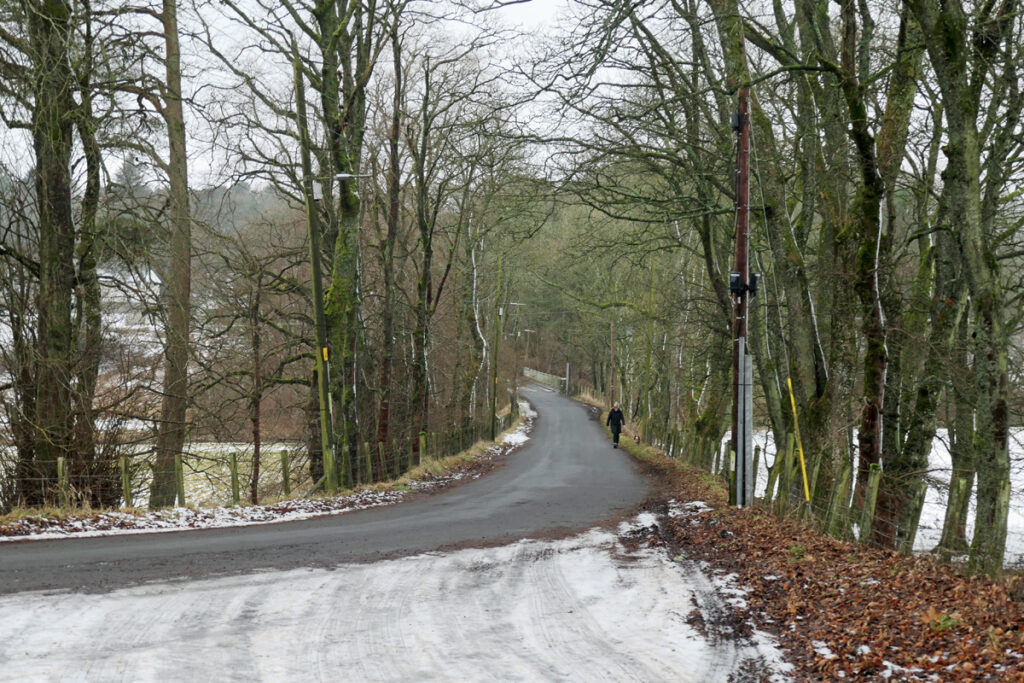
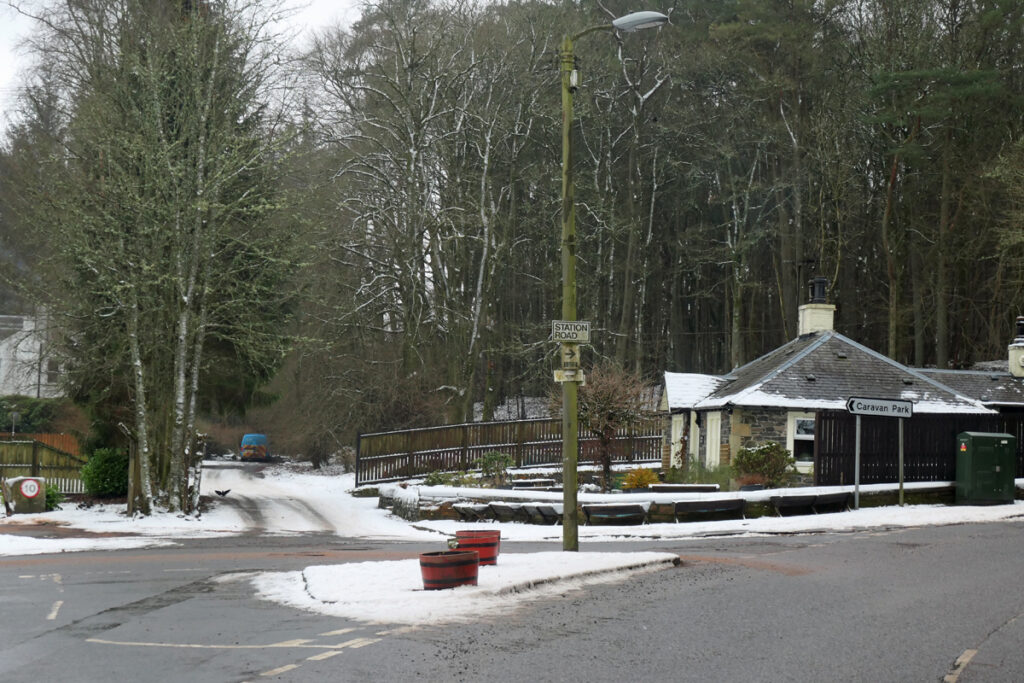
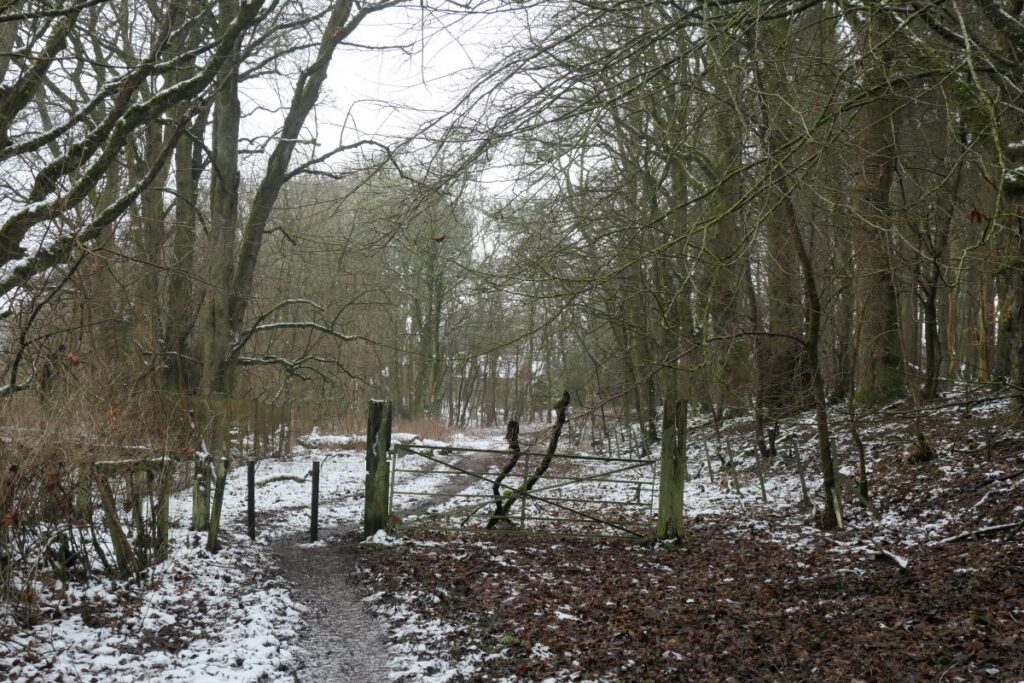
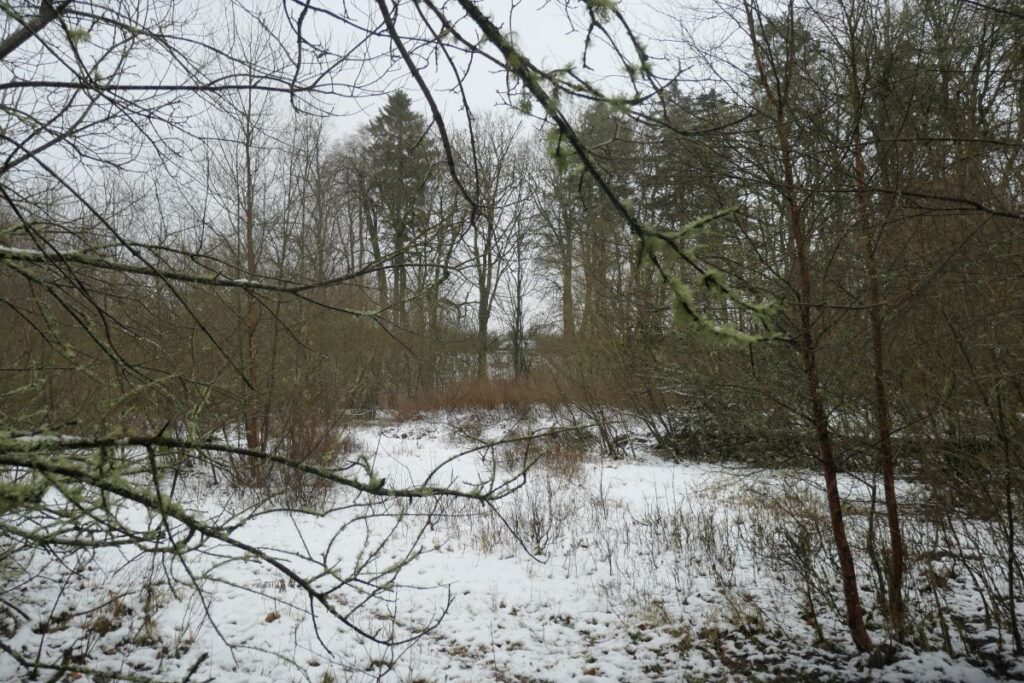
1.) Abington Station, 2.) Station road, heading towards Abington village, 3.) Entrance to estate grounds at the north lodge, 4.) The route through the Abington estate, just past the site of Abington House, which burned down in 1898, 5.) King Edward VII slept here – the site of Glengonnar House
Robin Chesters 15/02/2025
Unless otherwise stated, all text, images, and other media content are protected under copyright. If you wish to share any content featured on Clydesdale's Heritage, please get in touch to request permission.
